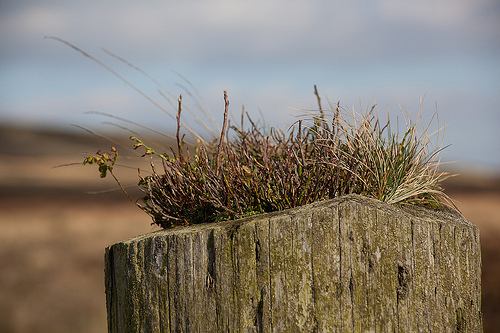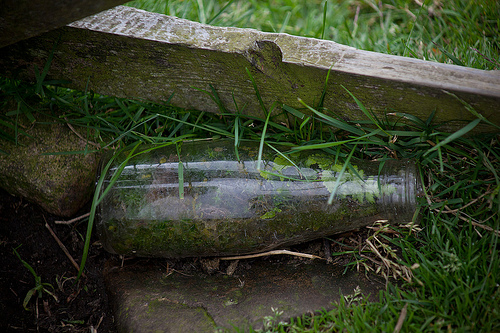An occasional recurring theme in my book On the Moor is the idea that ‘life is good at finding new ways’. I didn’t realise it at the time, but it’s an idea borrowed from Jurassic Park.
The level at which evolution occurs is a hotly debated subject, but I like to keep things simple: genes mutate; individuals are selected; species evolve. The majority of the times I use the phrase life is good at finding new ways, I’m referring to the evolution of species. But sometimes I’m referring to something else: how individual organisms find themselves in strange new places, but somehow get by (which can occasionally be the first step in the evolution of new species).
In the first chapter of the book, I write about how certain individual plants have found themselves growing on top of some of the fence-posts that bound the Moor. I write about one fence-post in particular, which I nickname the Niche, on account of its being an interesting new niche in which plants have somehow found themselves. (I go on to discuss the somehow, obviously.)

Last week, walking on the Moor, I spotted an even more unusual niche: an old milk bottle. It was packed with moss, grass and ferns, which seemed, if anything, to be thriving:

I don’t know how long this second, perilously fragile Niche will survive, located as it is in a moorland gateway on top of a millstone grit set (paving stone). But, unlike us, the plants living in Niche 2 don’t have any choice in the matter: they’re stuck with the hand life has dealt them, and are simply getting on with being plants.
That’s what plants do. Extremely well.
Leave a Reply